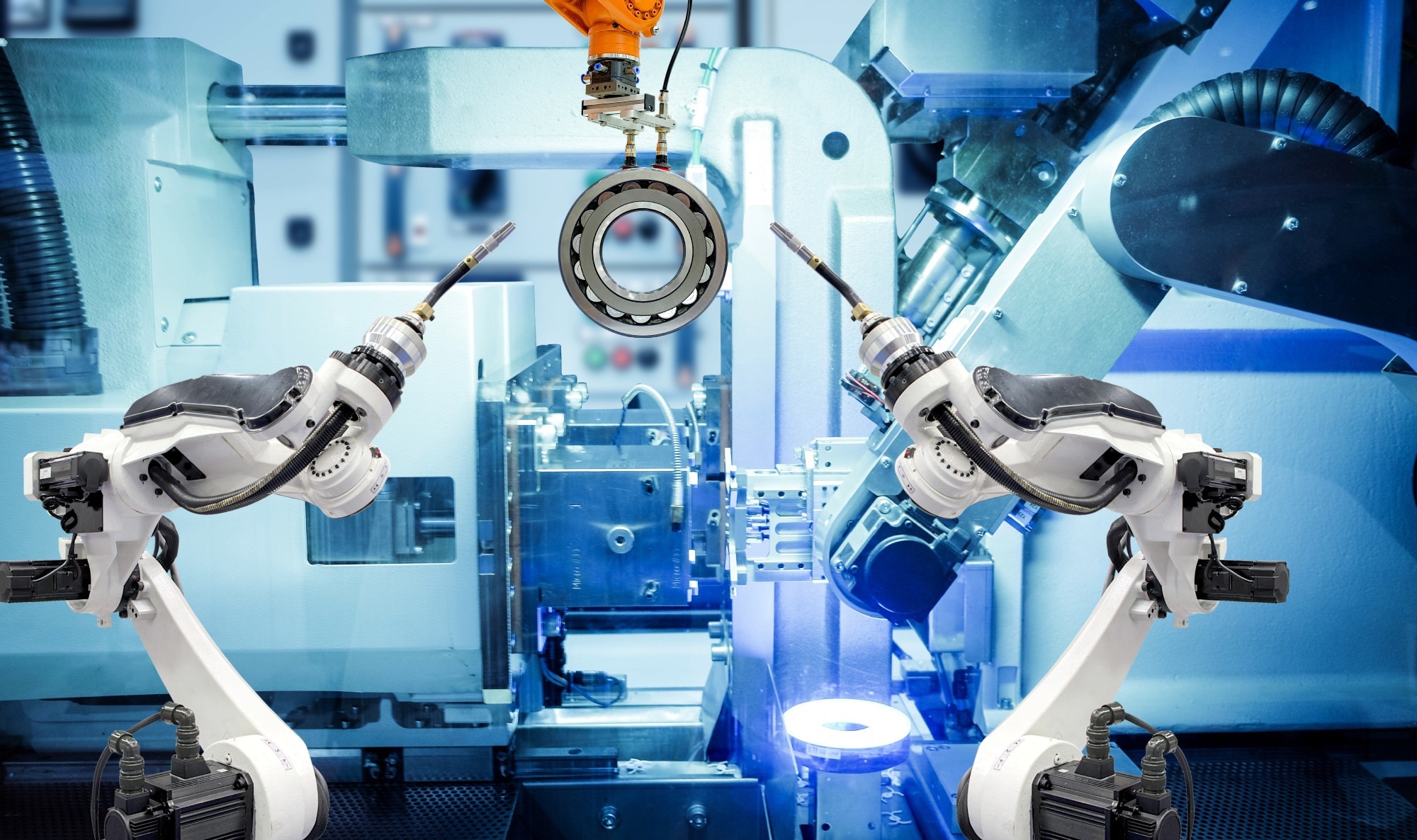An article published in the journal Scientific Reports explores robotics and automation, the key pillars of Industry 4.0 that are critical for boosting productivity and efficiency in modern manufacturing. Industrial robots, equipped with versatile end effectors called gripping systems, are increasingly deployed across industries to automate various tasks from handling to welding. The global demand for industrial robots continues to surge rapidly, with over half a million new installations reported in 2021 alone.
 Study: Automated Customization of Robotic Gripping Systems for Industry 4.0. Image credit: FeelGoodLuck/Shutterstock
Study: Automated Customization of Robotic Gripping Systems for Industry 4.0. Image credit: FeelGoodLuck/Shutterstock
The selection of optimal robotic gripping systems is pivotal for securely grasping parts and ensuring flexibility, precision, speed, and reliability in manufacturing processes. However, the design and development of customized, application-specific gripping solutions remain predominantly manual, resource-intensive, and inaccurate. Systematization of modular, easily reconfigurable gripping system architectures and structured mapping of part geometries to component grippers can enable rapid and automated gripper customization attuned to production environments.
About the research
The authors comprehensively analyze prevailing gripping system classifications and provide an exhaustive examination of structural configurations encompassing coupling units, power units, clamping units, locating units, and control units deployed across impactive and astrictive grasp paradigms. Configuration variants spanning drives, gears, sensors, magnets, and suction cup materials are systematically classified based on capabilities, limitations, operating constraints, accuracy, environmental resilience, and costs.
Gripping methods providing force or form closure are assessed in light of the nature of parts handled: soft, delicate, or irregular shapes. Key metrics quantified include force-to-weight ratios, movement precision, grasping force control strategies, and speed and frequency of emergency stops. A mapping is established between properties of parts being manipulated; production environmental factors encompassing humidity, temperature, and lubrication; equipment dimensions in the robotic cell and resultant structural choices governing gripping system layouts, including options for manual, semi-automated, or fully programmable finger adjustments.
Structural diagram of modern gripping systems
The authors put forth a modular architecture for next-gen gripping systems consisting of five fundamental units: a coupling unit responsible for positioning other subunits, a power unit generating prehensile forces for grasping parts, a clamping unit made up of effectors physically contacting handled components, locating unit enabling repeatable positioning of gripped objects, and control unit comprised of sensors tracking states of structural elements, parts, and ambient conditions.
Various standard and soft finger designs compatible with form or friction closure grasping are assessed in light of the nature of surfaces (smooth, textured, delicate, or breakable) and constituent actuator properties (electric, pneumatic, hydraulic, and magnetic drives). Design configurations for flat or contoured suction cups are evaluated from perspectives of seal, structural strength, chemical, and thermal resilience, the tendency for surface abrasion or paint damage, and compatibility with irregular shapes. Means for manual and automated in-process finger reconfiguration to handle diverse geometries are explored by integrating gearing and control electronics.
Techniques and placement strategies for sensors acquiring grip force, slippage, part dimensions, and environmental attributes are suggested to enable real-time stability assessment and trajectory recalibration, ensuring collision avoidance and part integrity preservation, especially significant for human collaborator safety in production zones.
Classification of gripping system components
A coding scheme is formulated to uniquely identify the capabilities of multifaceted robotic grasping solutions deployed in varied environments handling a multitude of objects. Major categories itemized pertain to a number of work heads, nature of applied force - impactive compression or astrictive surface cling, specifics of integrated drives, number and modes of adjustment for end effectors, materials and shapes used, changeover, and sensing possibilities.
Assignment of such structural tags aids preliminary down-selection from vast repositories of commercially available grippers and design blueprints. System IDs referencing technical specifications covering strength limits, stroke lengths, accuracy, inertia tolerances, and maintenance needs provide supplementary data aiding procurement. Collating part production sequence steps, associated operational conditions, employed grip types, and historically effective gripper model codes aids in training supervised models to automate future gripper tailoring upon encountering new components.
Use cases and applicability
The proposed classification system is applied to categorize designs from the existing body of research, a pneumatically actuated rotary gripper for shaft handling, a vacuum-based dual manipulator for simultaneously lifting diverse objects, and a reconfigurable tactile gripper dynamically optimizing grasps using integrated soft sensors and data-driven search strategies. Corresponding structural code words effectively profile workspace dimensions and the nature of end effector motion and control paradigms employed concisely.
This enables the identification of analogous prior implementations as starting points when formulating handling sequences for new parts. Associating classified gripper encodings with compiled experiences spanning assembled products, employed tools, and measured process metrics builds training data for guided gripper design automation routines responsive to line layouts and piece geometries.
Future outlook
The digitally accessible, machine-readable gripper configuration tagging paradigm offers pathways for a contextual recommendation of gripping principles and modular components best suited for instantaneous production settings and newly encountered parts.
Integrating these encoders with sensor-equipped smart factories and product lifecycle management platforms allows dynamically updating mappings between realized efficiency and grip choices when handling specific geometries under measured ambient states. Emergent correlations uncovered in aggregate historical assembly and handling data using artificial intelligence techniques can expose optimality principles guiding automated gripper morphology synthesis tailored for customer specifications.
The proposed work ushers cost-effective and rapid design frameworks for contextually fitting grippers, delivering flexible and dexterous robotic handling by systematically indexing versatile structural machine element combinations that ably manipulate broad object categories under varied conditions.
Journal reference:
- Ivanov, V., Andrusyshyn, V., Pavlenko, I., Pitel', J., & Bulej, V. (2024). New classification of industrial robotic gripping systems for sustainable production. Scientific Reports, 14(1), 295. https://doi.org/10.1038/s41598-023-50673-5, https://www.nature.com/articles/s41598-023-50673-5